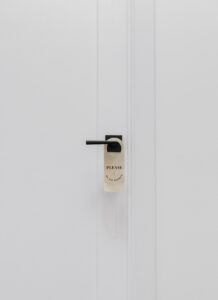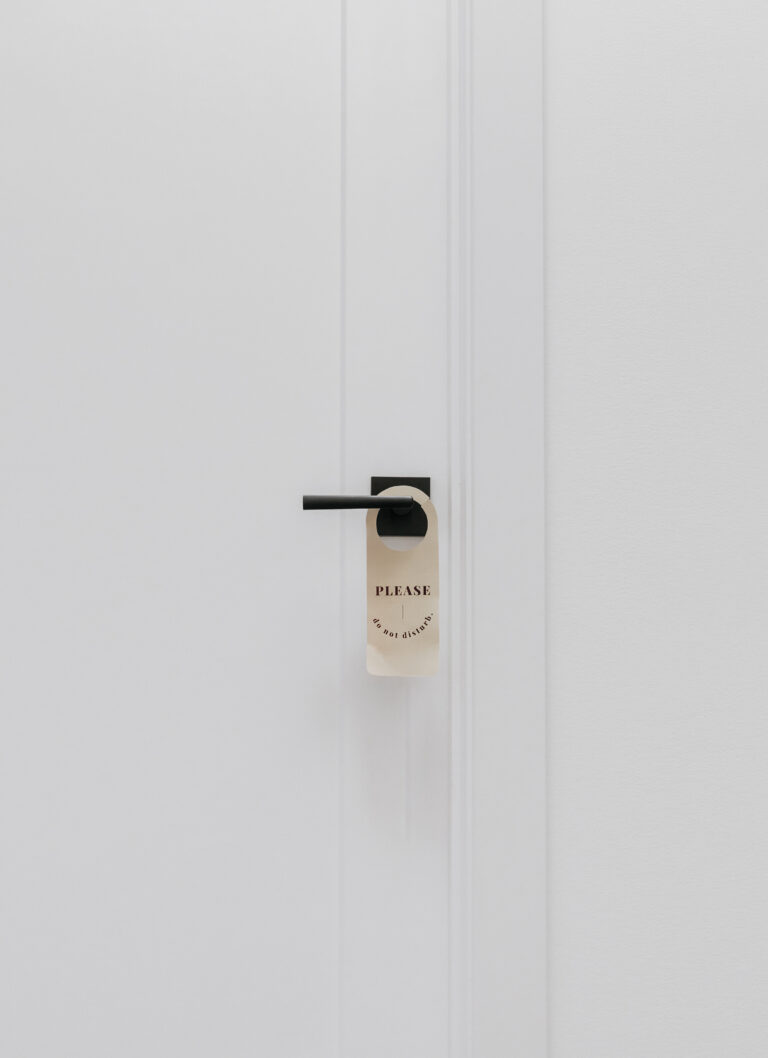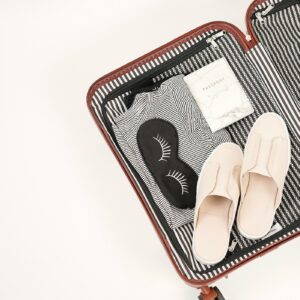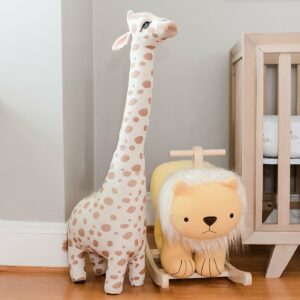Separation anxiety is a very real, natural, and healthy part of your child’s development. (As a child development specialist, it’s also a topic I nerd out to!) It can also pop up at various points in time and manifest itself in different ways depending on the developmental stage your child is at. The first signs of separation anxiety usually emerge around 6 months when your child develops object permanence (the understanding that things continue to exist even when they are out of sight). Around 8-10 months, we often see a peak in separation anxiety with another recurrence around 18-24 months.
Why does separation anxiety happen?
The WHYS behind separation anxiety stem from the massive cognitive leaps your child goes through. Around 6-8 months when separation anxiety first emerges, it is aligned with the development of object permanence – your child knows that you continue to exist even when you’re not in the room (& they miss you!) Prior to this development, if you covered their favorite toy with a blanket they’d probably look at you briefly but quickly move on to something else. If you were to do this same experiment with a baby who had already developed object permanence, they would likely try to pick up the blanket to retrieve their toy.
As your child grows and becomes more cognitively mature, their understanding of separations and reunions become more sophisticated and emotionally complex. This is why we can see separation anxiety peak again around 18-24 months as cognition matures and imaginations begin to evolve.
Your child may be clingier, fussier, more cautious or fearful around others, and/or have more tears during separations (including at sleep times). Though separation anxiety can emerge at various time throughout childhood, episodes usually only last 2-3 weeks (like most other developmental milestones).
Here are 8 things you can do to help your child through these periods:
1. Lead by example
Your child looks to you for guidance and will follows your cues. If you’re not willing to let them out of your sight, chances are they will begin to feel – albeit unconsciously – as though they are not safe if you leave the room. Designate a safe space in your home where your child can play and explore a bit without your direct supervision. Independent play is something you can begin to encourage very early on, first with direct supervision, and later from the next room.
Another strategy you can practice – even outside of any periods of separation anxiety – is planned separation. This could mean playing peek-a-boo with a large blanket so your younger baby can practice watching you disappear and reappear again, or, while your child is happily playing independently and in a safe space (like a play pen), walking out of the room saying, “Mommy will be right back” and then returning a few seconds later. These activities can help your child become accustomed to the idea of leaving and returning…and that when you “disappear,” it won’t be for good! Mommy may leave, but she always comes back! It’s a small adjustment, but it can have a tremendous impact.
2. Start with a familiar face
Children who are going through a period of separation anxiety may begin to prefer one parent over the other. But a familiar face (family or friend) who they’ve already spent some time with and who’ve they’ve grown to trust is a better option than a strange one. If your child is newly resistant to your absence, leave dad or grandma at home while you’re out and about.
Of course, living far away from family being a solo-parent makes this not always possible. Plus, you and your partner certainly need a date night every now and then. In this case, I would invite any new caregiver over prior to your outing to get your child familiar with their new friend.
3. Build in transition time
In addition to a previously planned meet-and-greet, if possible invite your child’s caregiver over 20-30 minutes before you actually have to leave and spend some time all together. Seeing that this is someone you’re familiar with and trust goes a long way in reassuring your child that they’re “good people” and worthy of their trust too.
4. Don’t sneak away
Oftentimes goodbyes are just so hard that it’s much easier to avoid them altogether by sneaking away while your child is distracted or occupied. I’m not a fan of this practice at all. Please always prepare your child for your departure (whether that’s you leaving for work, going out for the evening, or just saying goodnight at bedtime). You don’t want your child to be playing nicely and then look up and realize that you have disappeared. Imagine what might go through their mind: “Where have you gone?” Will you come back? Next time, I’m not going to let go of your leg because the moment I went off on my own, I lost you.”
As your child gets older, you can create a nice goodbye routine with special hugs, high-fives, and key phrases. Even if it provokes some tears, it’s important for your child to understand that you are going to leave sometimes but you will always come back when you say you will.
5. Use age-appropriate language
Separations can be difficult for babies and younger toddlers to understand. But that doesn’t mean you can’t or shouldn’t clue them in on what’s going to happen.
For pre-verbal babies, a kiss and key phrase like, “Mommy always comes back!” is simple, effective, and the consistency of it will eventually be internalized and become your child’s inner narrative.
For toddlers who have some degree of understanding of time, tell them when you’ll be back as it relates to their schedule. “Mommy will be back after you wake up from your nap.” Or, “Mommy and Daddy will be back after dinner when it’s time for bath.” This will help give your child a tangible timeframe to hold onto.
6. Be your child’s thermostat
Your child may get very upset when it’s time to say goodbye. This is normal – not scary, bad, or wrong! Because your child is looking to you for cues on how to feel, it is so important to stay calm and composed during periods of heightened emotions. If you get as worked up as your child, they will begin to feed off of you. Validate their emotions and help them understand that they are safe all while regulating yourself. (Easier said than done, I know!)
7. Use a transitional object
Encourage your child to connect with a lovey, stuffed animal, or blanket that they can use to comfort them when their preferred person isn’t around. Though these items are not recommended for sleep until your baby is 12+ months, they can be helpful for times when you cannot be there like with a babysitter or at daycare.
8. Keep sleep routines & expectations consistent
Just like during other developmental leaps, we don’t want to abandon ship and totally change the way sleep looks. Not only can this feel chaotic and confusing to your child, but it can create new preferred habits that are unsustainable long after this rocky period has passed.
Though building in a little extra time for connection during the bedtime routine can be helpful and offering more hands-on comfort during tough middle-of-the-night moments is okay, try not to begin any new habits you don’t intend to maintain. This can unintentionally reinforce that your child is somehow unsafe or not okay when you’re not there.
Separation anxiety is normal and largely unavoidable, but it’s not forever. Remain consistent, supportive, assertive, and calm and over time, your child will understand the concept of you leaving and returning again and become more comfortable with it.
If you feel like you’re struggling and need more support, guidance, or strategies with sleep, please get in touch.














